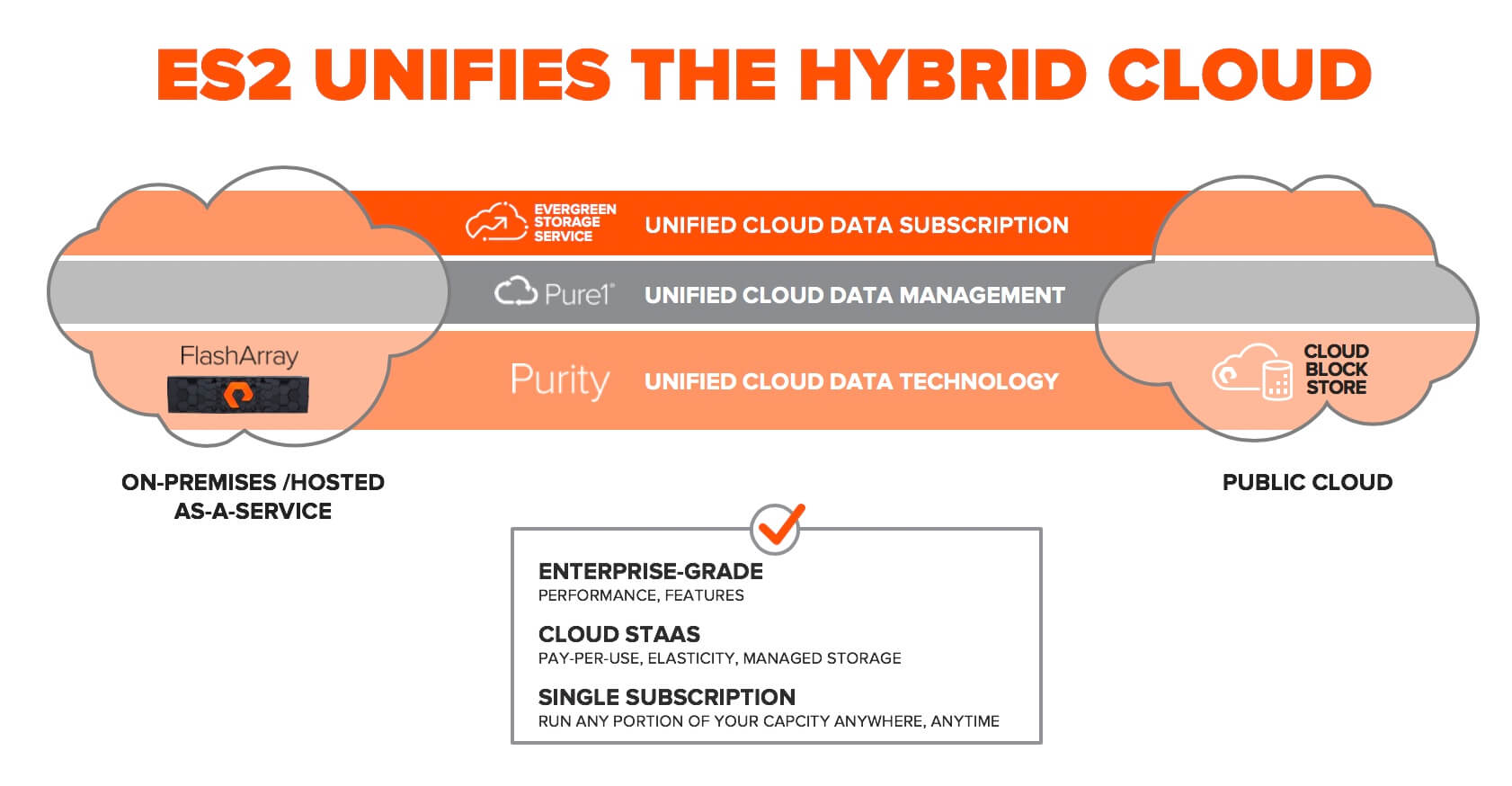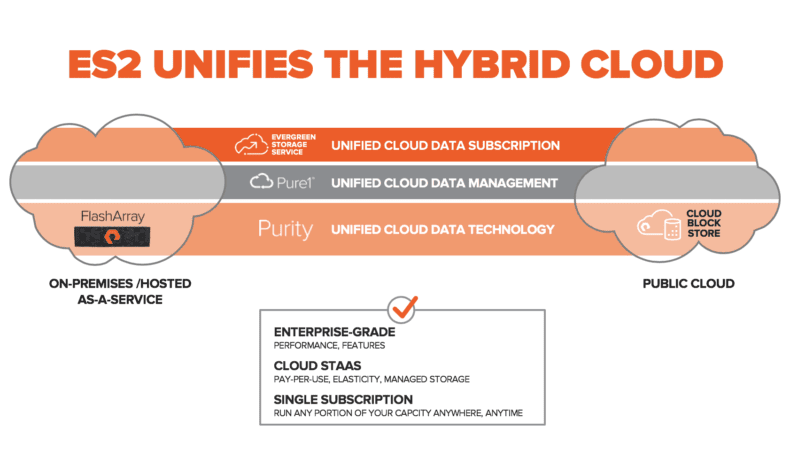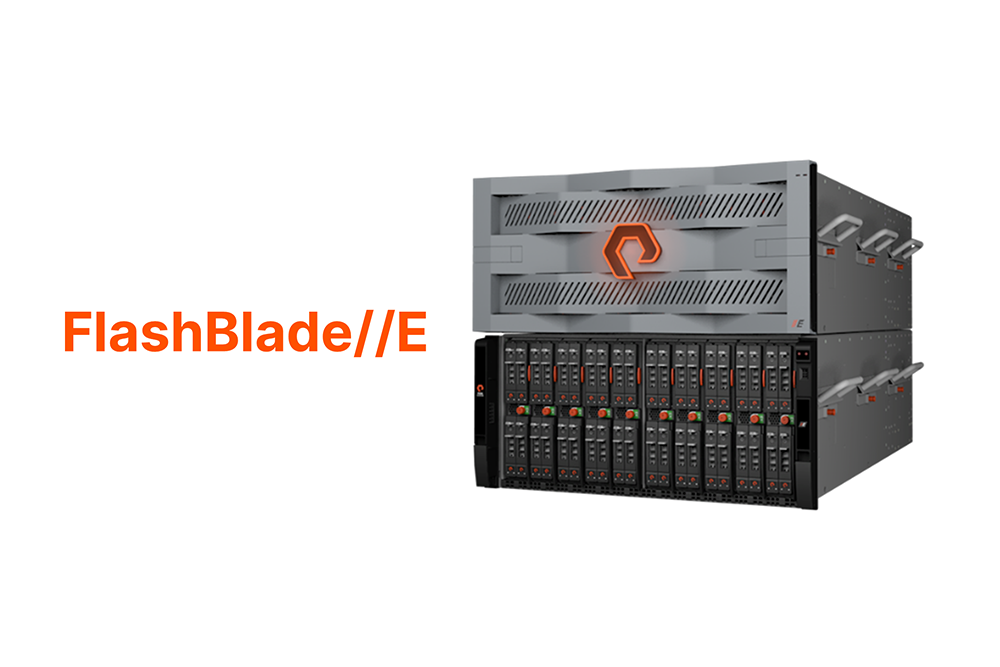A Guest Post by Eric Burgener
Research Vice President, Infrastructure Systems, Platforms and Technologies Group, IDC
The Hybrid Cloud Value Proposition
Many CIOs have given their teams a strategic objective around the use of cloud technologies. Cloud provides another workload deployment option that can deliver IT agility, offer simple global access, be easier to scale than traditional enterprise infrastructure, and move more of IT spend to an “opex” model. The long-term goal for many of these organizations is to balance their workload mix across on- and off-premises options to achieve a more efficient use of IT resources and people while still meeting business objectives. Today, most IT organizations are either planning investments in — or are already using — hybrid clouds.
Public cloud offers many benefits for IT organizations looking to simplify and streamline operations but is not right for all workloads. There are other considerations which can drive an on-premises deployment option. Performance, security, the availability of management tools, and meeting service-level agreements (SLAs) lead these, but other concerns include regulatory or compliance and IT governance for certain workloads. Even in these cases, however, the simple global access over the internet, fast storage provisioning, easy scalability, and self-service orientation of the public cloud are attractive, and many IT organizations are looking to achieve a “best of both worlds” solution by standing up their own private clouds in on-premises infrastructure.
A good private cloud offers many of the benefits of the public cloud but with IT infrastructure that resides in an on-premises data center that a customer owns and controls. A key advantage to the private cloud approach is that true enterprise-class storage solutions that may not be available in the public cloud are an option, offering the opportunity to deliver higher performance, availability and/or better storage management functionality (i.e. snapshots, replication, stretch clusters, etc.) than public clouds can. The type of hardware and software infrastructure that many public clouds deploy is what drives cloud benefits like simple storage provisioning, easy scalability, automated operations, and non-disruptive technology refresh, and these benefits are not available with just any on-premises storage solutions. In addition to building the software to support a self-service orientation with easy access over the internet, customers will need to restrict their infrastructure selections to those solutions which can meet these other requirements as well.
Financial Considerations – OPEX-based Storage-as-a-Service
How a storage asset is paid for can also be a critical purchase driver, and many enterprises are consciously looking to move at least some assets from a “capex” to an “opex” payment model, even for on-premises infrastructure. A flexible, storage utility pricing model that uses a “pay per use” approach and leaves IT assets off the balance sheet is one of the key attractions of public cloud, and not all enterprise storage vendors offer a true “opex” acquisition option for on-premises infrastructure. In the wake of the International Accounting Standards Board (IASB) 2019 directive, many former storage leases are no longer recognized as operational expenditures, and enterprises must be particularly careful in how they deploy on-premises infrastructure if they want to leverage the financial accounting benefits of a true “opex” model.
Expanding the Value Proposition – A “Unified” Hybrid Cloud
Application requirements evolve over time, and deployment models (traditional infrastructure, private cloud or public cloud) that may initially be a good fit for a workload may need to be changed over time. Having access to the necessary enterprise-class storage management features to meet SLAs, providing easy data and workload mobility, and enjoying a common “cloud experience” across all three environments often presents challenges, however. What would make things easiest is a unified hybrid cloud environment that offers a common feature set, common management, and a common subscription model that applies to a workload no matter where it actually resides. An emerging trend that addresses this need is the availability of enterprise-class storage operating systems that can be run in on-premises infrastructure as well as private and public clouds.
This approach is valuable for several reasons. For one, it provides a common management paradigm that allows enterprise storage or enterprise storage-as-a-service to be consistently delivered regardless of whether that is from traditional infrastructure, private or public cloud. This represents a strong simplification relative to having separate management environments for cloud and non-cloud environments.
It also provides full access to the key features enterprises depend on to manage their storage securely and cost-effectively, such as dual parity RAID, in-line compression and deduplication, thin provisioning, space-efficient snapshots, encryption, quality of service, and multiple replication options (including stretch clusters for zero data loss configurations that can support up to “six nines” of availability). This ensures that whatever performance, availability, security or other requirements can be met in one location can be met in another.
When the payment model for such a solution can include a unified subscription that applies in the same way regardless of where a workload is run or moved to, then this provides significant additional value. This latter feature (the “unified subscription” model) is not available from most enterprise storage providers, despite its obvious appeal. This “unified hybrid cloud” vision removes management limitations in today’s disparate cloud and non-cloud approaches and lets IT administrators make workload location decisions subject to fewer constraints.
Key Guidance
When defining a hybrid cloud strategy, there are key elements to consider that will increase your probability of a successful implementation:
- Unified Cloud Technology. Do you have the same tier-1, “enterprise grade” features on-premises and in the public cloud? Are storage efficiency features like in-line data reduction, which are commonly used in on-premises storage infrastructure, implemented to optimize efficiency in both data movement and storage, regardless of location?
- Unified Cloud Experience. Just being able to run an enterprise-class storage operating system in the cloud is not enough, and customers can and should look more deeply into what having a common cloud experience across multiple locations really means. Can on-premises infrastructure really provide the simple, non-disruptive elasticity, scalability and technology refresh available in the public cloud? Are the APIs the same between on-premises and cloud deployments? What tools are available to enable data mobility and how easy are they to use? Is the cloud “experience” consistent regardless of where a workload is run?
- Unified Licensing and Subscription Model. Is the option for a true “opex” model really the same across all locations? Is the subscription “portable”, allowing you to move any portion (or all) of your subscribed storage from on-premises, to a co-location/hosted site, or to the public cloud seamlessly and back again as needed? Is the $/GB cost of storage the same across all deployment locations, regardless of the access patterns?
Conclusion
There is no doubt that hybrid cloud already is and will continue to be the mainstream deployment model for IT infrastructure going forward. But what hybrid cloud means can differ significantly, depending on what vendors are relied on for the storage infrastructure. The ability to deliver a true “cloud” experience (agility, non-disruptive scalability and technology refresh, opex, utility pricing, location-independent subscription, etc.), along with industrial-strength enterprise storage management features that can be consistently applied regardless of location, offers an attractive option to companies looking for a “best of both worlds” blend with their IT infrastructure strategy. Plan carefully, and you can enjoy the benefits of a truly unified hybrid cloud.
MESSAGE FROM THE SPONSOR
One example of a vendor that has the ability to deliver on the promise of a unified hybrid cloud is Pure Storage. Their Evergreen Storage Service (ES2) “storage as a service” offering is available across all relevant locations, including:
- On-premises storage infrastructure
- In a hosted/co-location facility
- Attached to the public cloud from the co-located facility
- Or “in” the public cloud via its Cloud Block Store which runs on top of Amazon Web Services (AWS)
The offering is based on their Purity enterprise storage operating system software and has common functionality and user experience regardless of where it is running. The entire offering is based on a unified subscription model that allows you to begin your cloud journey in any location and then move any portion of the licensed storage between locations over time as often as necessary. All of this can be done under ES2 without changing the dollars paid to Pure Storage – the total amount of the storage subscription remains constant even as the allocation of licensed storage may change between locations. Subscription costs increase only if the amount of storage capacity under management is increased (which can be done non-disruptively regardless of location). This provides the flexibility to move workloads to the optimal location in terms of performance and/or cost while staying with the same subscription model, making it easy to ensure that a workload runs in the optimal location all the time (even as requirements may shift over time).

Additional IDC Resources:
- Unified Hybrid Cloud Definition Evolves with the Release of Pure Storage’s New Evergreen Storage Service Program
- Unifying Storage in Hybrid Cloud Environments




